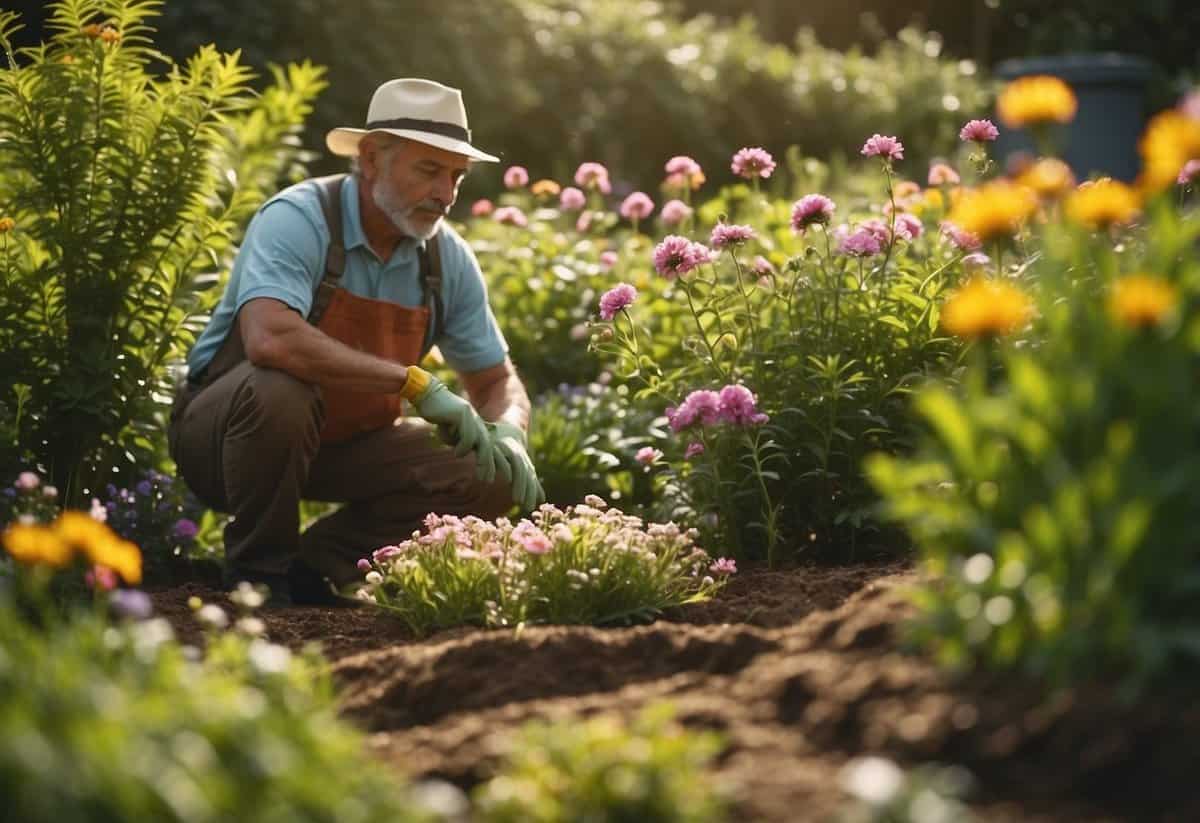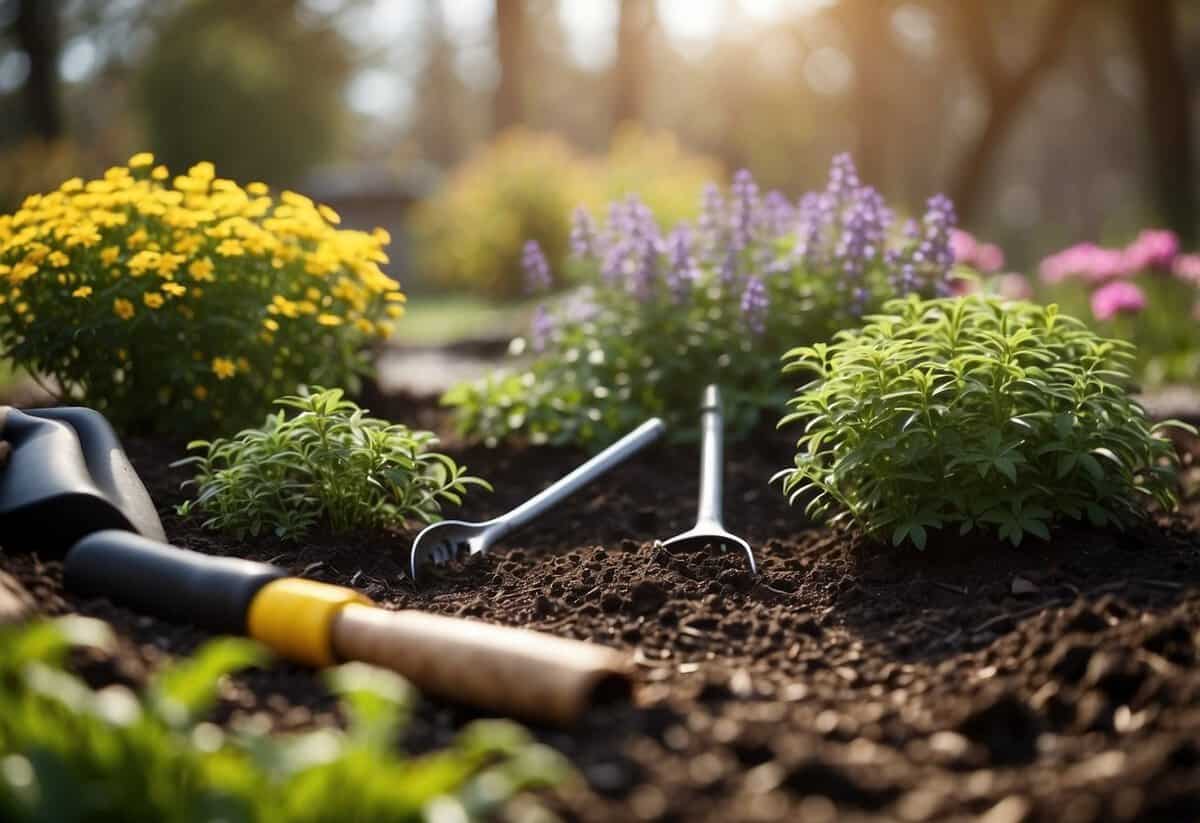February Garden Tips: How to Prepare for Spring
As the chill of winter begins to fade, February is the perfect time to start prepping your garden for the upcoming spring season. This month offers a unique opportunity to get ahead on various gardening tasks that will lead to a flourishing garden in the months to come. What can you do now to set the stage for a thriving spring garden?

Gardening in February involves both indoor and outdoor activities that can help ensure a beautiful and productive garden. Whether you are an experienced gardener or just starting out, focusing on the right tasks this month can make a significant difference. Make the most of this transitional period to give your plants the best possible start.
1) Plant Early Bloomers

Planting early bloomers can brighten up your garden at the start of spring. Consider adding daffodils like ‘February Gold’ for a burst of yellow. Forsythia offers vibrant yellow flowers in early spring and can be a striking feature.
Lenten Rose is another great option, as it blooms early and thrives in shaded areas. These plants add color and life to your garden just when you need it most.
2) Prune Your Roses

February is a good time to prune your roses. By now, most of the winter frost has passed. Focus on cutting back any dead or diseased branches. This helps promote healthy growth.
Make sure to prune any branches crossing through the center. This will open up the plant and improve air circulation. It’s also a good idea to remove any weak or spindly growth.
When you’re ready to start, check out these tips for pruning roses. Happy gardening!
3) Start Seeds Indoors

February is a great time to start seeds indoors. This early start provides your plants with the extra time they need to grow strong before being transplanted outside.
Opt for vegetables like broccoli, Brussels sprouts, cabbage, and tomatoes. These cool-weather crops do well when started early.
Make sure the environment stays warm and moist. Most seeds germinate best at temperatures around 70-75°F (21-24°C).
Use a quality seed-starting mix to help maximize germination rates. This mix is usually lighter and fluffier than regular potting soil. Your seeds will thank you for it!
Keeping these tips in mind can set your garden up for success in the spring.
4) Add Mulch to Beds

Adding mulch to your garden beds has many benefits. Mulch helps the soil retain moisture, which is especially important during dry periods. It also helps keep weeds at bay and maintains a consistent soil temperature.
When you add mulch, choose a type that complements your garden’s design. For example, brownish/red pine mulch looks great with brick houses (https://www.hgtv.com/outdoors/landscaping-and-hardscaping/beds-and-mulch/10-mulch-dos-and-donts).
Applying mulch in the spring is ideal (https://www.thespruce.com/when-to-mulch-7377303). Make sure the ground has warmed up, and your spring bulbs have emerged before you start mulching.
5) Feed Perennials

It’s important to feed your perennials in February to help them grow strong and healthy in spring.
Start by applying a balanced, slow-release fertilizer around the base of your plants.
Sprinkle compost or well-rotted manure near the roots. This boosts soil nutrition and promotes vigorous growth.
Remember to water the fertilizer in well to ensure the nutrients reach the roots.
By feeding your perennials now, you set them up for a thriving season ahead.
6) Clean Garden Tools

Keeping your garden tools clean is important for a healthy garden. Begin by removing any loose dirt with a soft brush or cloth. For tougher grime, use a stiffer brush or a metal scraper.
Next, disinfect your tools to prevent bacteria and fungi. Soak them in a mix of chlorine bleach and water for ten minutes. Rinse and dry them with an old cloth to prevent rust. This simple practice can make a big difference.
7) Plan Garden Layout

Take the opportunity to plan your garden layout. Think about where each plant will go and how much space it needs.
Consider companion planting. This method places plants together that benefit each other.
Mapping out your garden now can save you lots of time later and lead to a healthier garden.
8) Water Regularly

Make sure to water your garden about once a week. A deep watering helps roots grow stronger.
Avoid frequent, shallow watering. It leads to weaker roots and more evaporation.
Using a rain gauge can be helpful. Aim for about 2 inches of water.
Avoid overhead sprinklers for most plants, as they lose water to evaporation.
For more ideas, check out watering tips.
9) Check for Pests

This month, keep an eye on your garden for pests like aphids, spider mites, and mealybugs. Regular inspection is key.
Look at the underside of leaves where pests often hide.
If you spot any, remove them by hand or use an insecticidal soap. Checking houseplants for common pests is also important during February to maintain healthy indoor greenery.
10) Plant Cool-Season Vegetables

February is a perfect time to plant cool-season vegetables. These veggies thrive in the chilly weather and can give your garden a robust start.
Salad greens like spinach and lettuce are great options. They grow quickly and tolerate the cold well.
You can also plant root vegetables like carrots and radishes. These hardy vegetables can handle the lower temperatures and will produce tasty crops.
If you like cabbage and broccoli, now is the time to plant them. They will flourish in the cooler climate, providing you with fresh produce in early spring.
Preparing Your Garden for February

February is a crucial month to get your garden in shape for spring. Key tasks include preparing the soil and selecting the right plants to ensure your garden thrives.
Soil Preparation
First, test your soil’s pH level. Soil testing kits are available at most garden centers. Knowing whether your soil is acidic or alkaline helps you choose the right amendments.
Remove any plant debris from last season. This helps prevent diseases and pests from overwintering in your garden. Compost the healthy debris to enrich your soil naturally.
Next, enrich the soil with organic matter. Spread compost, aged manure, or leaf mold over your garden beds. Work it into the top few inches of soil to improve fertility and structure.
Check for frost heave in perennial beds. Frost can push plants out of the ground, exposing their roots. Gently press these plants back into the soil to protect them.
Selecting the Right Plants
Choose plants that are suited to your climate zone. For example, in USDA Zones 8-10, you can start seeds for cool-season crops like lettuce and cabbage indoors. Use a zone map to determine your zone.
Order seeds, bulbs, and plants now to ensure they arrive in time for planting. Early ordering ensures the best selection and availability.
Consider the layout and space needed for each plant. Some plants, like tomatoes and peppers, need more room and lots of sunlight. Plan accordingly.
Propagate perennials by dividing larger plants. This helps manage space and encourages healthy growth. Use a sharp knife or spade, and replant the divisions immediately.
By focusing on these tasks, you set the stage for a productive and beautiful spring garden.
February Planting Tips

In February, you can focus on planting cool-season vegetables and selecting ornamental plants to add beauty to your garden. This month is ideal for starting both types of plants, as the weather conditions begin to improve.
Cool-Season Vegetables
February is perfect for planting cool-season vegetables that thrive in cooler temperatures. You can start seeds indoors for lettuce, cabbage, and onions. These crops can handle the still cool conditions outside if you transplant them later. To protect them from unexpected cold snaps, cover them with garden fabric.
Warm regions, like Zones 9 and 10, allow for planting asparagus, beets, carrots, kale and more. Keep in mind that these plants need consistent watering and regular soil checks for moisture levels.
Propagating perennials during this time can add longevity to your garden. Dividing existing plants like lavender and sage will help them grow more robustly.
Ornamental Plants
Planting ornamental plants in February sets the stage for a colorful spring. You can start with pansies and violas. These flowers are cold-hardy and can add early color to your garden beds. Camellias and daphnes are also good choices, providing fragrant blooms.
Make sure to prune existing ornamental plants like roses and azaleas to encourage new growth. This is also a good month to plant bare-root roses and shrubs. Select spots with good sunlight and well-drained soil to ensure these plants thrive. Taking care of these details now can result in a vibrant, healthy garden later.
Maintaining Your February Garden

Keeping your garden healthy in February involves proper watering and protecting your plants from frost. Each task helps ensure a thriving garden as the weather starts to warm up.
Watering Techniques
Watering your garden in February can be tricky. It’s essential to water deeply but less often. This helps the roots grow strong. Make sure the soil is moist but not waterlogged.
Early in the morning is the best time to water. This allows the soil to absorb moisture before the sun gets too strong. Use a soak hose or drip irrigation to target the roots directly. Avoid sprinklers that can waste water and wet the leaves, which might lead to mold.
If the ground is frozen, don’t water. Wait until the soil thaws. Mulching can also help by retaining moisture. Use a layer of organic mulch like straw or wood chips around your plants.
Frost Protection
February can bring unexpected frosts that might damage your plants. Covering your plants can help protect them. Use materials like burlap, old sheets, or frost cloths. Draping them over plants in the evening and then removing them in the morning ensures your plants get sunlight.
Move potted plants to sheltered spots or inside during frosty nights. Using cloches, small plastic or glass covers, can protect individual plants.
You can also build simple frames out of wood or PVC to support covers over larger areas. It’s important to monitor the weather and have your protective materials ready to deploy. This preparation can make a big difference in keeping your garden healthy.







